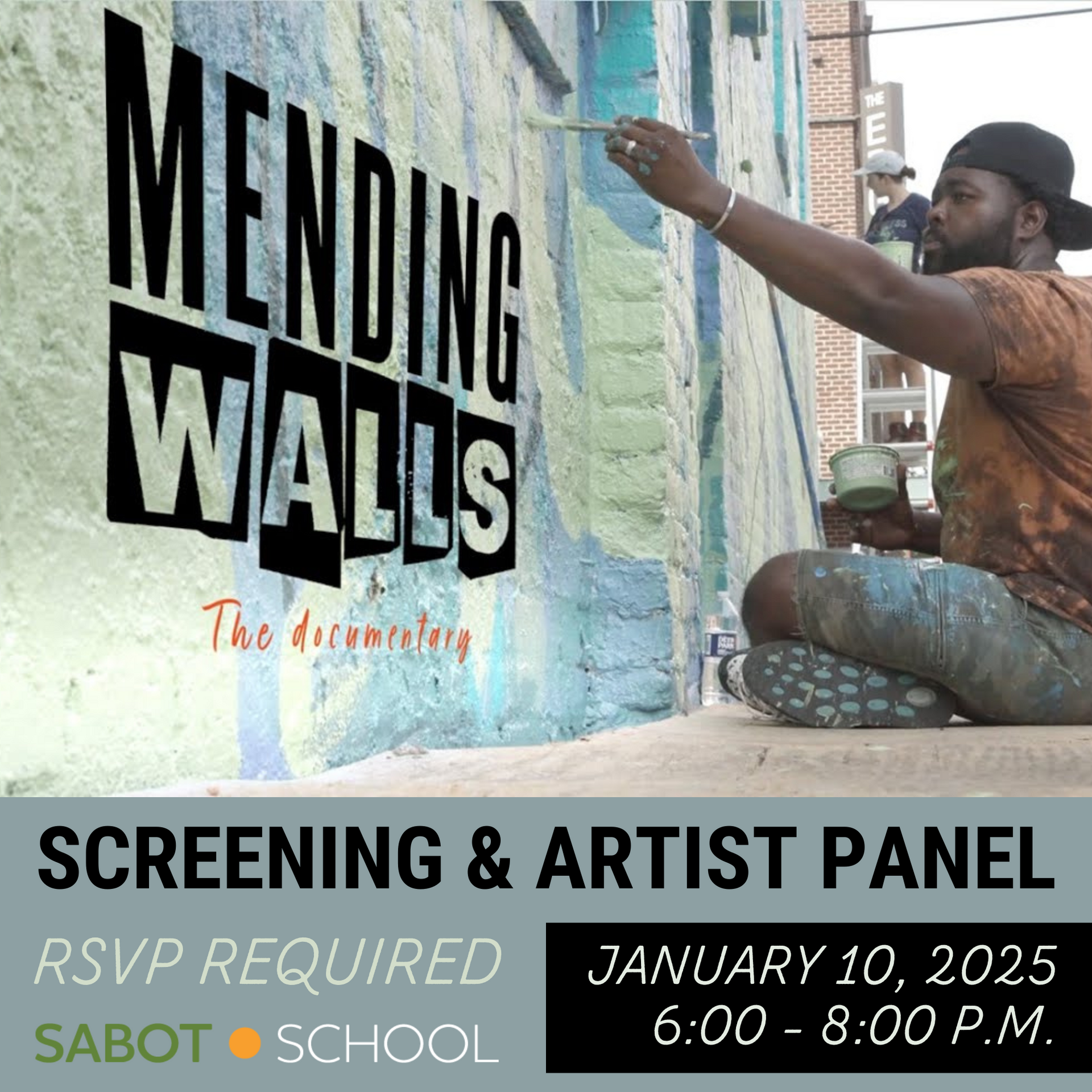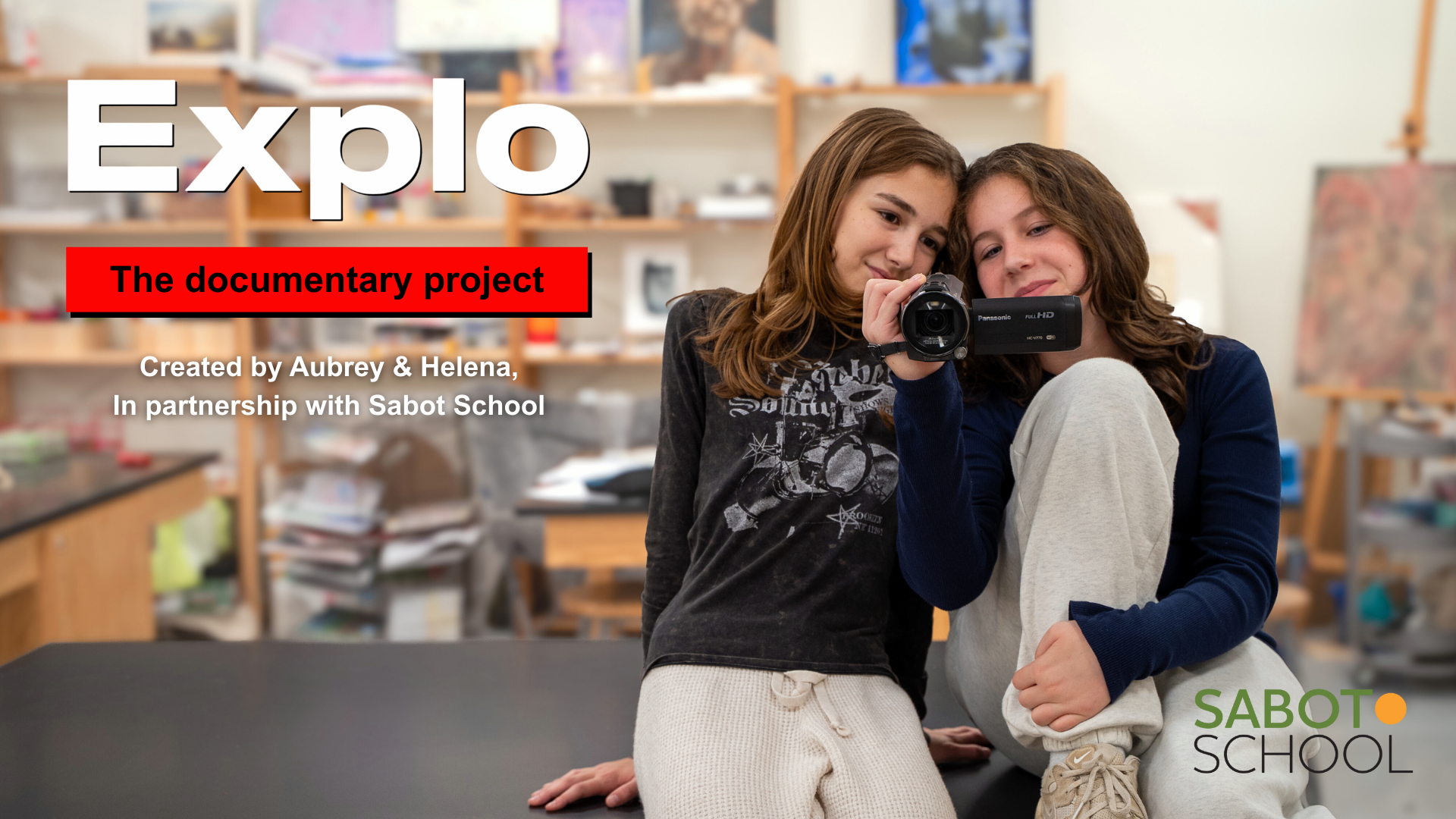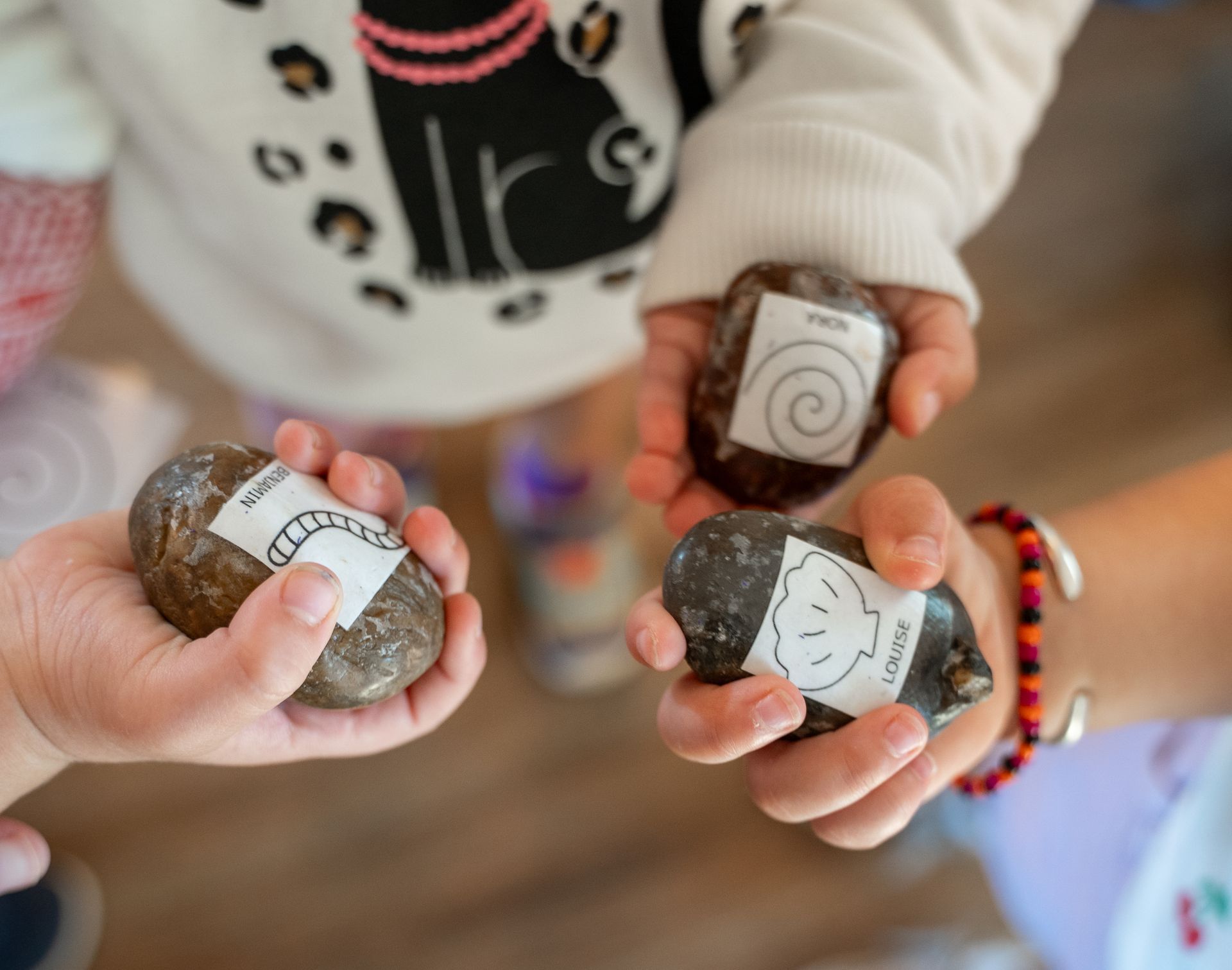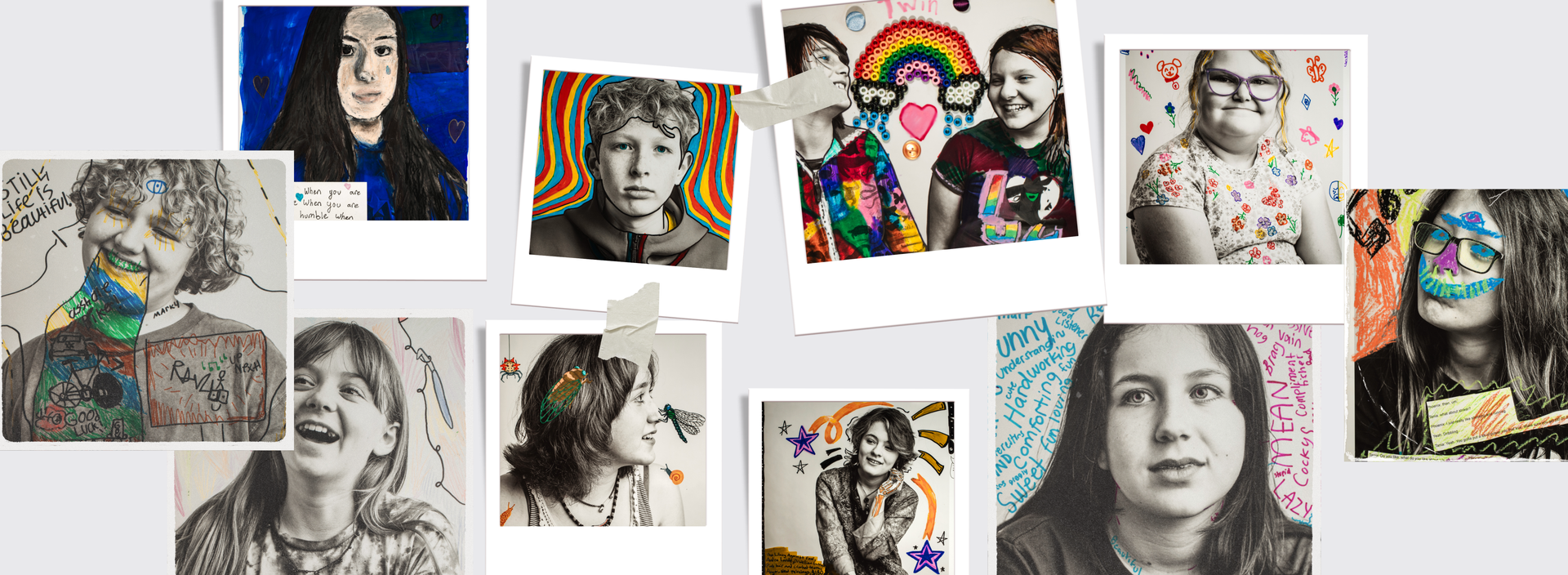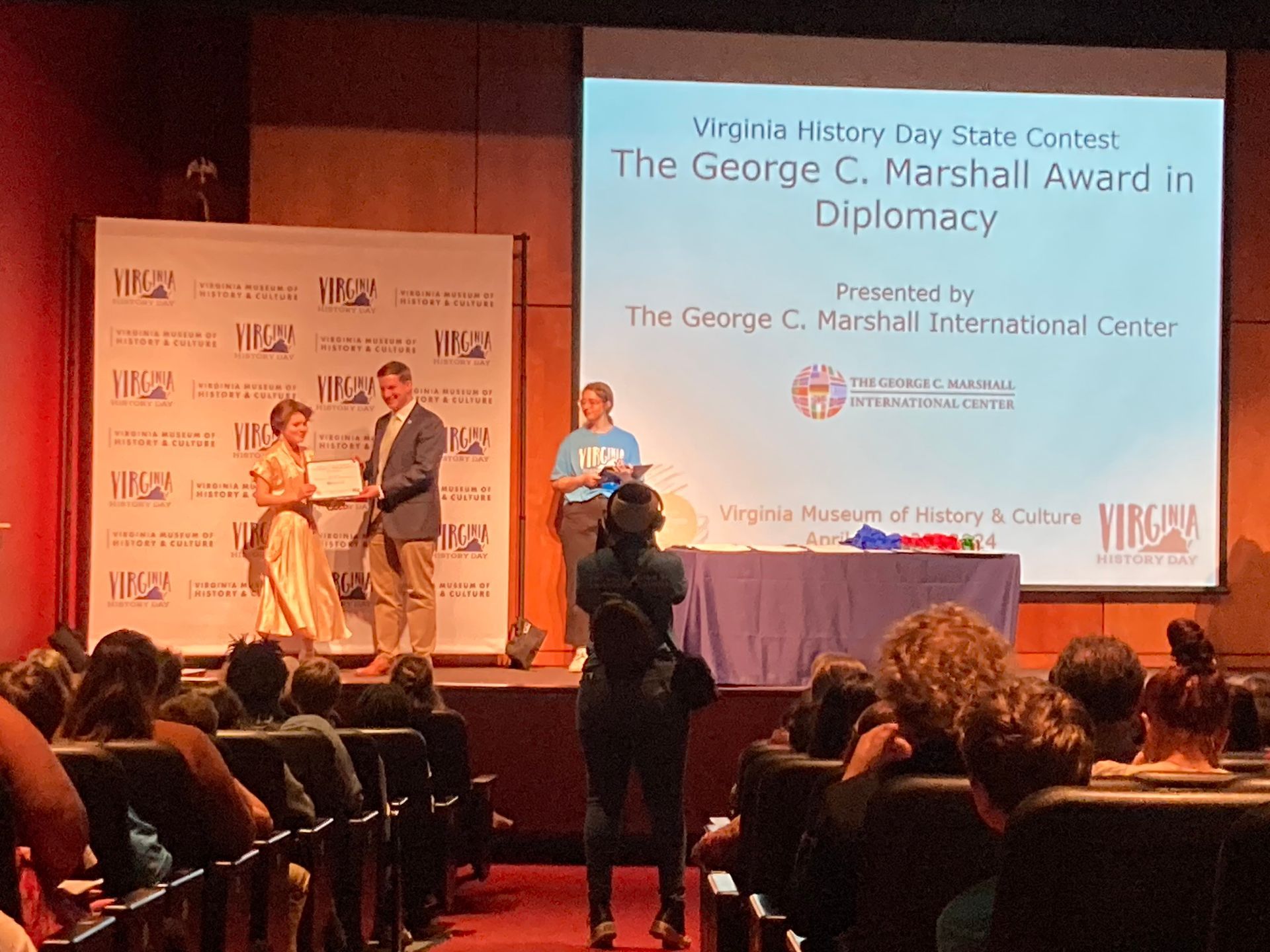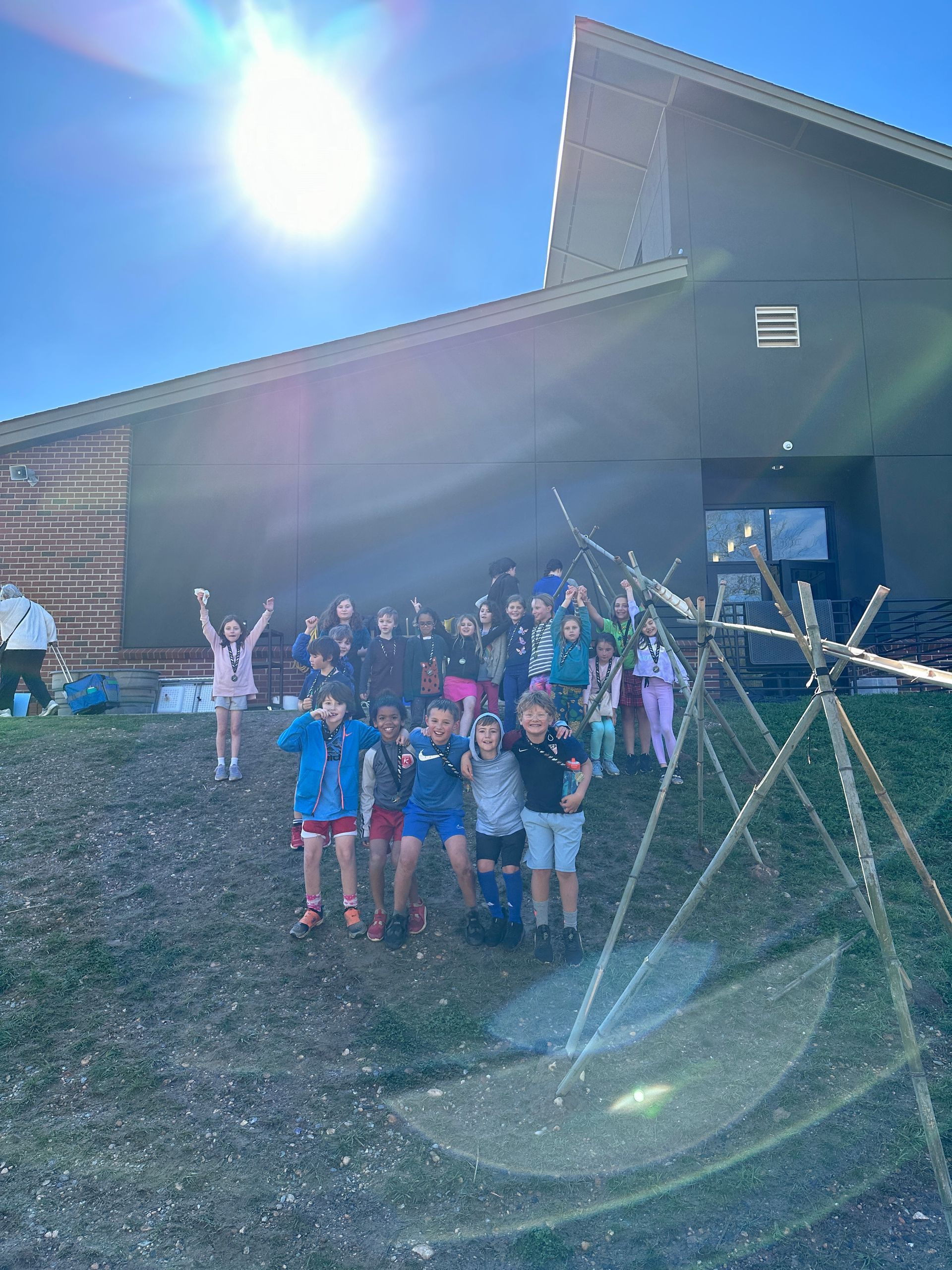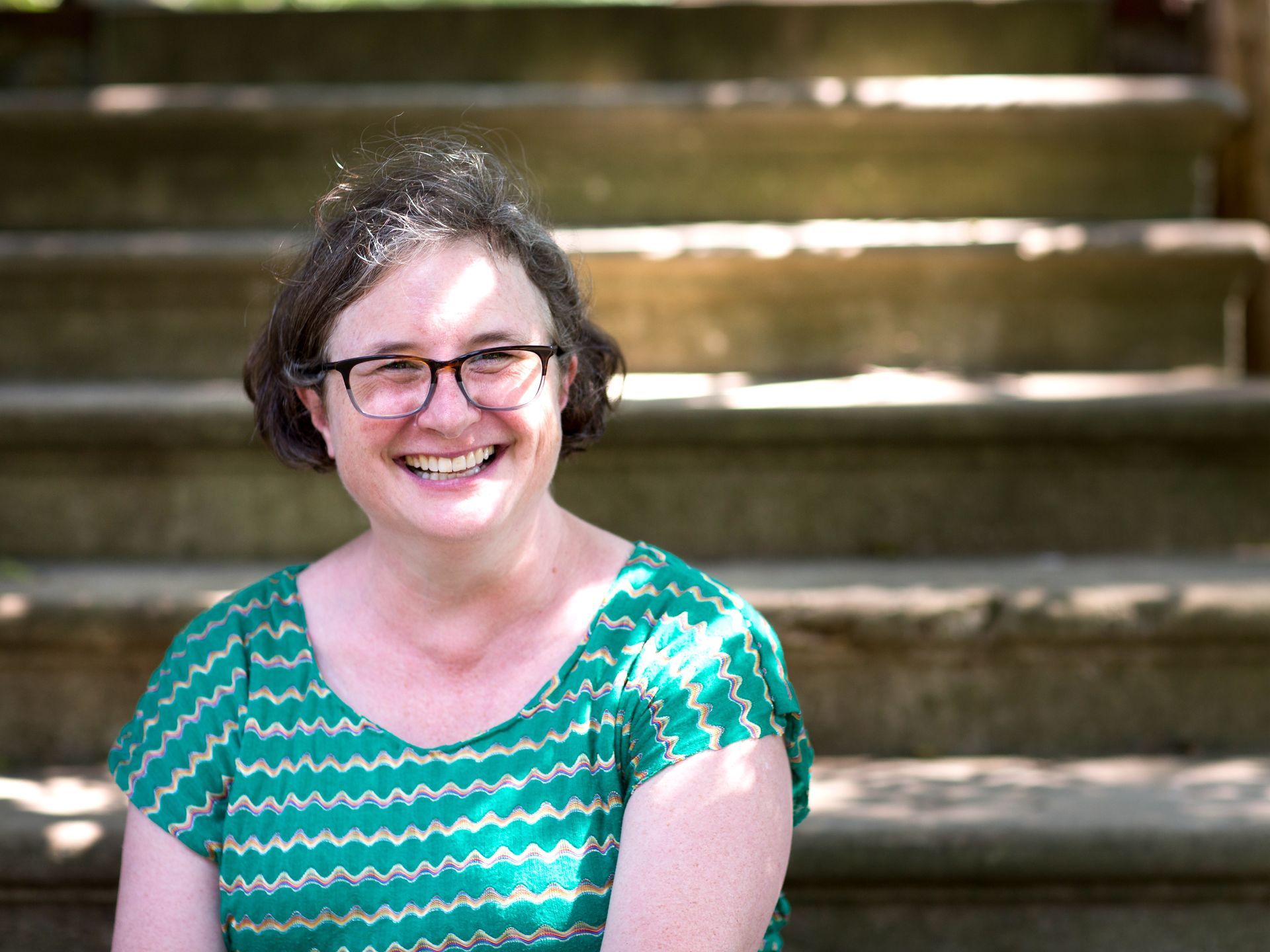Research and Representation: Climbing Into Our Family Tree and Finding Our Roots: Part 1
Why is it important to know your family story?
- Neil: If they [your ancestors] weren’t there, you probably wouldn’t be who you are.
- Ada: If you’ve never met them, you don’t know what they were like, but the story you share will help you know what they were like.
Each year, the Sabot Third Graders explore the essential question “ Who Are My People? ” by thinking about family histories through the lens of immigration, working to unearth information about their first ancestors who arrived in this country. This spring, the children interpreted this question more broadly and personally: Are “my people” only the people who first came here? Their immersion into historical research was driven by a deeply personal connection to their people and their own intrinsic interests. The organic nature of their investigative process allowed each pivotal research moment to breathe so that with each step forward, they were able to more fully see the rich interconnectivity of history while creating new dimensions to their own definition and sense of self. They began to learn about history in a way that solidly placed them within it. A stronger awareness emerged as the children became more cognizant that they are indeed part of a larger narrative.
- Gabriella: Our ancestors are a part of history.
- Lila: And history is a part of our ancestors.
- Reese: Our ancestors are part of our history. Your ancestors have their own ancestors.
- Hailey: Every time the world changes, it changes a part of us.
Third Grade Essential and Emergent Questions Guiding Our Research:
- Who are “ my people?”
- How can we use the story of our people as a lens for understanding the past?
- Why is it important to know who our people are?
- How are we connected to the story of our people – and how is this story connected to other people’s stories?
- How is my family’s story related to the larger story of history?
“How are they related to you ?” was a recurring question during our family story shares from the start, and one that continued to fuel the students’ interest and commitment to further investigate the birth, death, and lifespan of their ancestors. Using information from their initial family research, the children began their first attempts at creating a family tree. They were alternately engaged by the challenge of how much information they could include and frustrated by the seeming elusiveness of the task – the gaps that seemed impossible to know, the vast exponential nature of it all. Each revision demonstrated perseverance and a commitment to uncover more of their family story. The individual desire to uncover new information breathed life into their collective work.
The children generated symbol systems to articulate what they were still figuring out. They built this vocabulary together to show various strategies for representing divorce, unknown and step-family relations through different symbols, keys, and lines. Their revisions show the evolution of their thought processes and a new understanding of genealogical connections.
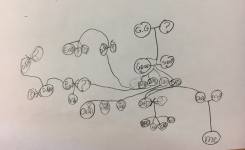


Above: Some of the first attempts at creating family trees. Below: Reese’s family tree. During her second revision, Reese created a legend to represent various types of relationships such as divorce, remarriage, and step-family relations through a series of different lines and boxes. She also created place holders for forgotten names.

Below left: Max H. began his family tree in a linear format, much like a timeline instead of a “branchier” tree. Below right: This revision demonstrates his growing understanding of connections across generations and family units. Bottom: Max’s final revision expands and clarifies his family’s genealogy.



Later, the children explored the idea of inherited and acquired familial traits by examining a color family tree. Sabot Aterlierista Lauren Bishop provided an example of a generational family tree that included grandparents, parents, and a child. As she mixed different colors down the tree, the children saw how a child was a product of all those colors mixed together (below left). In her second example of a color tree (below middle), she changed just one color for the grandmother but kept all other colors the same. The children saw that by changing just one person in their family tree, everyone else changed as well. Most of the children quickly understood that the colors were symbolic placeholders, representing the idea that we inherit the traits of our ancestors. They then set out to create a new version of their family tree to reflect traits that they felt they had inherited from their own ancestors, including both physical (or inherited) traits such as height, hair and eye color as well as more social (or acquired) traits such as a love of art, math, or music (below right: Lila charts her inherited and acquired family traits). Instead of being merely interested in their family story, the children came to understand themselves as part of it – to see themselves as interwoven and interconnected to their people, their ancestors. The influence of the past colors the present.




The next step in our research process was tasking each student to choose one of their ancestors to focus upon and then researching what life was like during the lifetime of their chosen ancestor.
- Gabriella: For someone to be an ancestor to you, they have to be from a different generation…like a parent..a generation before you.
- Lila: At least.

Right: Whiteboard thinking: The children compiled a list of significant historical events that they felt should be included on their classroom timeline. They looked through our classroom library to see what informational resources were available to them, and soon our co-constructed history timeline began to take shape – four centuries, from 1600 to 2000, incorporating the big social, political, and technological changes that their ancestors would have experienced within their lifetimes.
Once their historical research was in full swing, the collaborative timeline quickly transformed and the children began to make their “ancestor peeps” to place on the timeline. These “peeps” are an amalgam of factual knowledge about their chosen ancestor and the time period in which they lived and the imagined, based on educated guesses as to how that ancestor might have looked and lived.


In the picture above, we see several “peeps:” Graeme’s grandfather who was a paratrooper in the 1940s; Virgie, Gabriella’s great-grandmother who had nine children, holding her family’s beloved biscuit recipe that has been lovingly handed down; Hailey’s great-grandfather Dan, imagined as his three-year old self living in the mid-1930s; Max H’s great-granddad Hansford, who served in the army during WWII; and Lila’s Mor Mor, her grandmother who was born in the 1940s who is holding a genealogy book.
Helping us to better understand and appreciate the importance of family history and legacy have been the grandmothers who graciously came into our classroom to impart their research wisdom. Skylar’s grandmother Vanessa Nixon came to share her research story with us. Over the past several years, Vanessa has worked diligently to begin the daunting task of piecing her family history together. She shared with us the family scrapbook that she has compiled through online searches, her family’s oral history input, historical records, photographs, and documents.
The image of the bridge came to us during these discussions. One of the habits of mind that we hope to instill in Sabot students is the ability to apply past knowledge to new situations. In our conversation with Vanessa, it became apparent that this habit of mind is fully evidenced by this particular branch of investigative research.
How do older family members become the bridge to younger generations – and vice versa ? In the course of our conversation, the power of the bridge metaphor helped us all gain deeper clarity:
-
Ada: If you’re on one side of the bridge you gather knowledge and then you go to the other side of the bridge you spread the knowledge that you know. You can never learn everything, so you have to keep going across the bridge and keep going back and keep learning.
-
Max H: We are gathering information and we are becoming a bridge. People giving us information is acting as a bridge for us. You’re starting with curiosity and the unknown but then you need to come back around to go over the bridge again and leave it there for other people to get the knowledge like someone else gave it to you.
-
Xander: As you cross the bridge, you drop breadcrumbs of knowledge and then people follow in your footsteps. We are not physical bridges, but once you start researching, you become a knowledge bridge as you learn stuff you didn’t know.
-
Skylar: You’re not physically a bridge.
-
Vanessa: You are a bridge. When you came home [following these classroom discussions], you were excited. You became a bridge. Whatever you said caused the teachers to contact me which caused me to contact your class. My granddaughter connected me by [asking me to] come in to talk to your class. Your excitement somehow made you connected. Your teachers, your class, it spreads…
The following week, Sam’s grandmother Carolyn Chenoweth came to share her research story with the class. With her sister, she has conducted family research since 2000, and while she has utilized the internet as part of her investigations, she has also relied upon census and court records, family histories, military records, and birth, death, and marriage certificates.

 As Carolyn shared with us, “
one thing we need to remember is that everyone has a story, and as you do more research the people become more and more real to you, when you find a picture and can put a face to match with all the information you have. A primary source is an old record that was created when these people were alive.” While she has been able to trace her ancestry back to King Edward I, she reminded the children that “it’s not the most important thing to have kings or royalty in the family. The most important ancestors are the ones who you can relate to. We have a lot of farmers and coal miners in Virginia and North Carolina in my family.” The children then broke into groups to learn more about four of Sam’s ancestors through primary source documents. What could these documents tell us about who they were, how they lived, and when they lived?
As Carolyn shared with us, “
one thing we need to remember is that everyone has a story, and as you do more research the people become more and more real to you, when you find a picture and can put a face to match with all the information you have. A primary source is an old record that was created when these people were alive.” While she has been able to trace her ancestry back to King Edward I, she reminded the children that “it’s not the most important thing to have kings or royalty in the family. The most important ancestors are the ones who you can relate to. We have a lot of farmers and coal miners in Virginia and North Carolina in my family.” The children then broke into groups to learn more about four of Sam’s ancestors through primary source documents. What could these documents tell us about who they were, how they lived, and when they lived?
“Seeing” history through the lens of their ancestors has allowed the children to place their family story into connection with history as a whole and among the family stories of their peers, expanding their historical and personal schema. Consideration of “the bridge” only deepened our metaphorical thinking around this project – of how people are shaped by history, and how they, in turn, shape history – and how, by the very nature of their own investigations, the children themselves were becoming a bridge.
The post Research and Representation: Climbing Into Our Family Tree and Finding Our Roots: Part 1 appeared first on Sabot at Stony Point.
SHARE THIS POST
